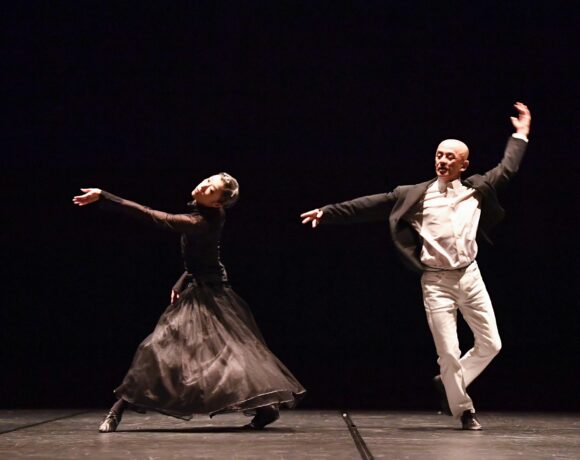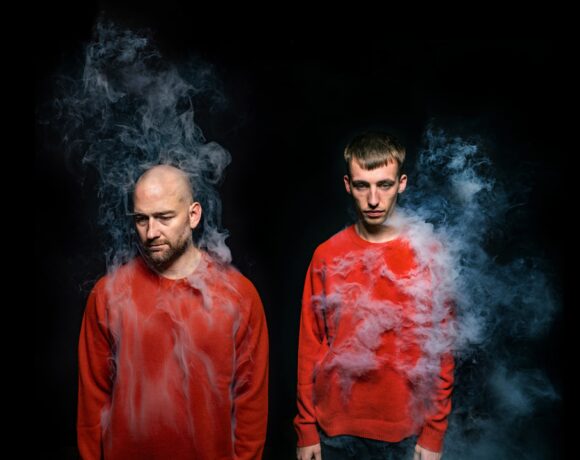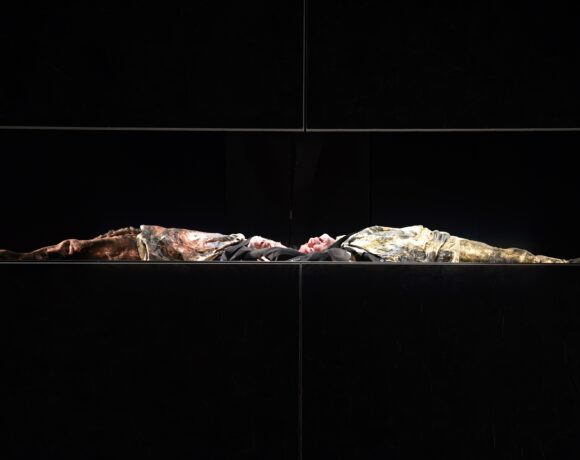The tragedy for the ancient Greeks was a bloody mystery that staged the absence of communication between the human world and the capricious divine sphere: in the story of every hero or mythical character everything appears to be determined by a fateful fate and man, fragile marionette hanging by a thread, is defenseless in front of its destiny and blind in relying on oracles and rites in the impossible attempt to direct his own actions. The public, identifying with the adventures of the characters on stage, was pervaded by feelings of pity and terror that led him to the final catharsis, a fundamental result of every tragic action. Euripides, an exemplary playwright for the realization of the passage of the protagonist from happiness to unhappiness, in Iphigenia in Tauris (composed around 415 BC) staged the individual’s rebellion against fate emphasizing the value of nobility of mind as an instrument of salvation.
Princess Iphigenia, sacrificial victim designated by her father Agamemnon to allow Achee ships, hampered by a curse, to set sail for Troy, is secretly saved by the goddess Artemis who intervenes by replacing her with a deer and transporting her to Tauris, where she assigns her to the cruel task of guarding her temple and performing the ritual sacrifice of every foreigner who landed on the peninsula. The girl, who hates in her heart the hatred towards the Greeks, who in the name of a war did not oppose her sacrifice, and the nostalgia for denied family affections, risks killing her brother Oreste, meanwhile reached the sanctuary for stealing the statue of the goddess, but their mutual recognition leads them to concoct the escape together with the help of Athena.
The ancient poets created conscious, alert characters, capable of great passions and deeply connected with their feelings and impulses. They were the expression of an archaic, sanguine and symbiotic world in every element and aspect, radically antithetical to the fleeting individualism that marks the contemporary lifestyle. For this reason, translating these verses composed more than 2000 years ago into a language that is adapted to our times today without diluting their original efficacy and without distorting their underlying ethics is a delicate operation, which few can successfully complete. One of these was Joseph Beuys, who in Frankfurt on 29 and 30 May 1969 in the Titus-Iphigenia action (condensation of the two tragedies Titus Andronicus and Iphigenia in Tauris), appeared on stage dressed in a fur coat. After having abruptly taken it off he began to imitate the flight of birds, to play two bronze plates, to emit guttural sounds amplified by a microphone, to regurgitate fat and to nourish with sugar the majestic white horse with which he shared the stage. Iphigenia’s happy ending was interpreted by him as an invitation “to the passage from chaos to order, from the notion of sacrifice to that of the Renaissance”, central themes in his poetics. By associating himself with an animal, through the fur and imitations of birds, the artist evoked the transformations of the Tartar shamanic rites by assimilating them to the last-minute substitution of Iphigenia with a deer on the sacrificial pyre. The action therefore meant to represent a general renaissance, through the acceptance of a form of positive animality.
Iphigenia in Tauris. I’m silent by Lenz Foundation elaborates these suggestions and ideally starts from here. The tragedy was recently staged in Parma, Verona and Genoa with text and images by Francesco Pititto, direction, installation and costumes by Maria Federica Maestri and an extraordinary Monica Barone, unique interpreter of this second chapter of the Lenz diptych dedicated to the myth of Iphigenia. Welcomes the viewer a minimalist scenography based on a suggestive conceptual and visual synecdoche that creates a hybrid setting between dream and obsession. The horns of the doe sacrificed in place of the woman oscillate as a warning attached to a thin mechanical easel and also the temple of Artemis is evoked by two columns suspended from a similar mechanism. In a corner a mysterious altar flashes on which stands a transparent bath, a sacred premonition of the post-modern ritual that will take place in the following 45 minutes. And then her. Initially immobile, curled up on the ground in an iridescent mantle that recalls her noble origins, she lights up a turntable that makes Gluck’s Iphigenie en Tauris resonate. She is alone and that is her choir; no hidden artifice rules the scene, no illusion invalidates the truth of things and the public is witness to every aspect of the action that takes place.
Even Iphigenia, like Beuys, gets rid of her cloak and her body begins to float favoring music: if the Euripidean Iphigenia has a nostalgic character and auscultates the deceptive visions of the night in which memories of her lineage destroyed by shame are mixed, the Iphigenia that we find in front of us is an elastic and energetic being, feral and sensitive, that tries to react to exile impersonating the essence of the places that cross her. Iphigenia is wave, sea foam, rock and seagull flying, but she is also a restless spirit that hovers over the contemporary Tauride (present-day Constance, in Romania) where she casts her shadow, invisible to passers-by, over ruins, viewpoints and panoramas for tourists. Perhaps there is no brother to be recognized and saved here, the woman dances for herself sticking her gaze between the audience, tells of her being the object of the sacrifice forced to become an executioner. She wears an evident yoke, a medical necklace tightening her neck it allows her to breathe and suffering purifies her gestures. Iphigenia is a shaman, her dance is ecstasy, goes beyond the space-time limits that separate us from that archaic generation and returns to the myth its original brutal vitality transforming the natural peculiarities and attitudes of the interpreter into choreographic and dramaturgical material.
Iphigenia seems about to suffocate and breathes through a wood-diaphragm that welcomes it as if it were bark or leaf. The blood of another innocent victim will not flow on her altar because she will replace the useless sacrifice with a purification liturgy in which she offers the most fragile aspect of herself as a supreme pledge of authenticity. Finally she can speak and it is pure emotion to hear her voice and her breath amplified by the microphone: she too, like the ancients, seeks contact with a supernatural dimension, but unlike her ancestors, avoids any deceptive mediation and obtains it through a profound and lucid appropriation of the self. It is a new beginning: for her, for her family redeemed by guilt and also for the spectator, who in 2019, even if he cannot have a precise idea of what the Aristotelian catharsis was, reluctantly leaves the room feeling more free.
Iphigenia in Tauris. I am silent is in the schedule of the twenty-fourth edition of Natura Dèi Teatri, International Performing Arts Festival curated by Lenz Foundation, which will continue until November 30 with its epicenter in Parma.
Info:





For all the images: Lenz Fondazione, Iphigenia in Tauride – Ph: Maria Federica Maestri
Graduated in art history at DAMS in Bologna, city where she continued to live and work, she specialized in Siena with Enrico Crispolti. Curious and attentive to the becoming of the contemporary, she believes in the power of art to make life more interesting and she loves to explore its latest trends through dialogue with artists, curators and gallery owners. She considers writing a form of reasoning and analysis that reconstructs the connection between the artist’s creative path and the surrounding context.






NO COMMENT